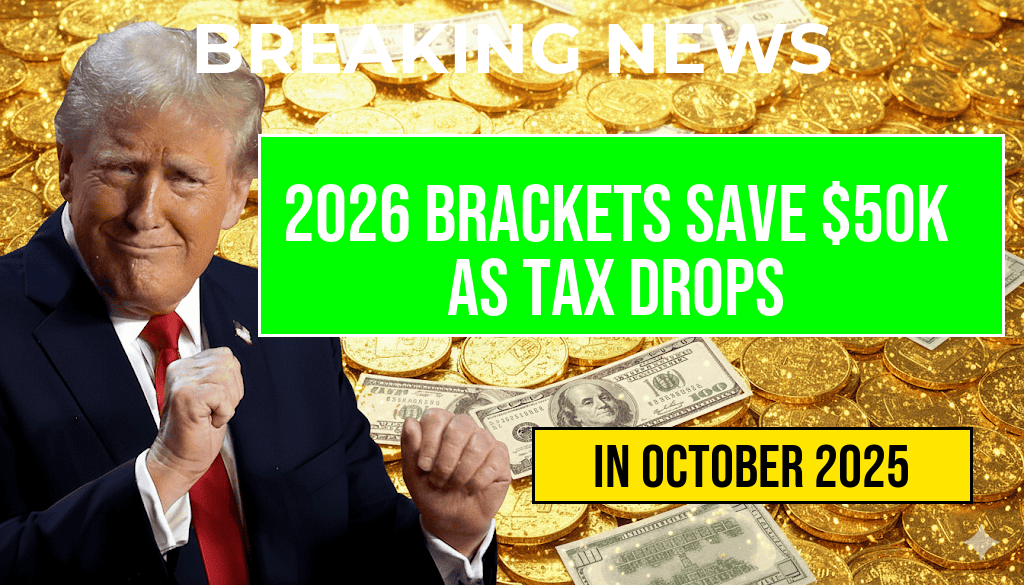Projected 2026 Tax Bracket Changes Could Save High Earners Thousands
Recent analyses suggest that upcoming adjustments to the federal income tax brackets in 2026 may significantly benefit high earners, particularly those with incomes exceeding $50,000 annually. With the top marginal tax rate decreasing to 12%, individuals in the top income tiers could see their effective tax burden substantially reduced, translating into hundreds or even thousands of dollars in increased take-home pay. This shift is part of broader tax policy reforms aimed at simplifying the tax structure and providing financial relief to middle- and upper-income taxpayers. Financial experts warn that these changes could reshape the financial landscape for high-income households, encouraging more disposable income and potentially influencing economic activity across various sectors.
Understanding the 2026 Tax Bracket Revisions
The Internal Revenue Service (IRS) is expected to implement new tax brackets starting in 2026, following legislation that aims to modify the existing structure. According to projections from tax analysts, the top marginal rate will drop from its current levels—often exceeding 24% for high-income earners—to a flat rate of 12%. This adjustment will primarily impact taxpayers earning more than $50,000 annually, but the most significant savings will accrue to those in higher brackets, particularly those earning over $200,000.
These revisions are designed to simplify federal taxation and reduce the marginal tax rates for middle- and upper-middle-class taxpayers. The change will also adjust the income thresholds at which various rates apply, making the tax system more progressive and potentially more equitable. For high earners, this could mean a dramatic reduction in their overall tax liability, especially when combined with other deductions and credits.
Projected Impact on High-Income Earners
Calculations indicate that a taxpayer earning around $150,000 annually could see a reduction in their federal tax bill by approximately $2,500, depending on deductions and filing status. For those earning over $300,000, the savings could reach upwards of $5,000 or more. These figures are based on current projections and assume no significant changes to tax law beyond the announced adjustments.
| Income Level | Current Top Marginal Rate | Projected Top Marginal Rate (2026) | Estimated Annual Savings |
|---|---|---|---|
| $50,000 – $100,000 | 22-24% | 12% | $1,000 – $2,500 |
| $150,000 | 24% | 12% | ~$2,500 |
| $300,000+ | 35-37% | 12% | $5,000+ |
Implications for Personal Finances and the Economy
Lower tax rates for high-income earners could lead to increased disposable income, prompting more spending, saving, or investment. Financial advisors suggest that individuals in the top tax brackets might accelerate savings or business investments, potentially spurring economic growth. Conversely, some critics argue that these changes could reduce federal revenue, raising concerns about funding for public services and infrastructure.
Tax policy experts point out that while the immediate financial benefits are clear, the long-term effects depend on broader fiscal strategies and how the government adjusts spending policies to compensate for revenue shortfalls. Nonetheless, for many high earners, the prospect of paying less in taxes offers a tangible boost to their financial flexibility, which could influence their personal and professional decisions.
Additional Factors to Consider
- Tax Deductions and Credits: Changes in the brackets may alter the value of certain deductions and credits, impacting net savings.
- State Taxes: State income taxes vary widely and may not follow federal adjustments, affecting overall tax burdens.
- Legislative Uncertainty: As policies evolve, actual outcomes could differ, especially if legislative priorities shift before 2026.
For taxpayers and financial planners, staying informed about legislative developments remains crucial. Consulting with tax professionals can help individuals optimize their financial strategies to take full advantage of upcoming changes. Additional details about tax reform proposals and their implications are available on Wikipedia’s tax in the United States page and through updates from the Forbes tax section.
Frequently Asked Questions
What is the significance of the projected 2026 brackets for high earners?
The projected 2026 brackets could significantly reduce the top tax rate from current levels, potentially saving a $50,000 earner hundreds of dollars in taxes annually and increasing their take-home pay.
How will the decrease in the top tax rate to 12% affect high-income earners?
The reduction of the top tax rate to 12% means that high-income earners could keep more of their earnings, resulting in higher net income and improved financial benefits.
What are the projected changes to the tax brackets in 2026?
The 2026 tax brackets are expected to be adjusted to lower rates, especially at the top end, which could lead to a more favorable tax situation for earners making around $50,000 or more annually.
Will the tax savings apply to all income levels or primarily to high earners?
The tax rate reduction is primarily aimed at high earners, particularly those approaching or above the $50,000 income mark, providing them with substantial tax savings.
When will these projected changes to the tax brackets take effect?
The projected tax bracket adjustments are expected to be implemented by 2026, subject to legislative approval, potentially providing immediate benefits for taxpayers in the upcoming years.

Leave a Reply